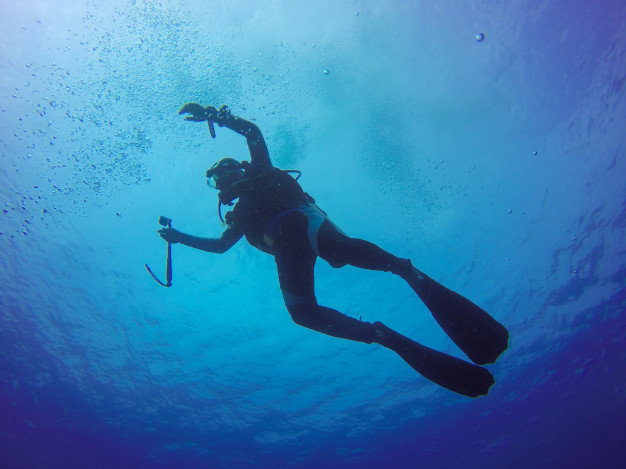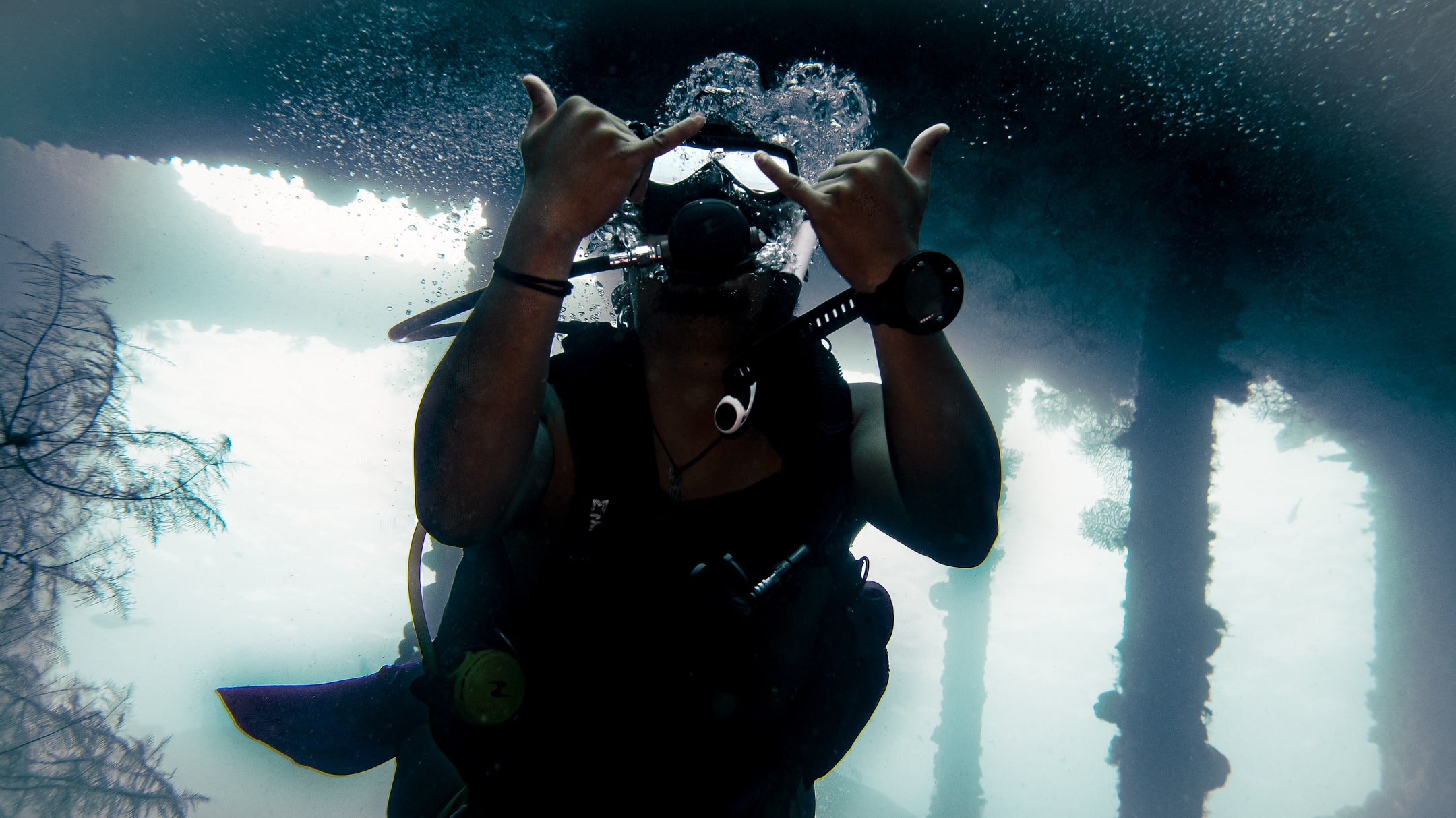Once you’ve completed the PADI Open Water Certificate, you may feel as if you’ve conquered the entire ocean. But not so fast – diving skills can quickly be forgotten, especially if you don’t regularly scuba dive after your four-day Open Water training.

You need to keep honing these 4 scuba diving skills right after you’ve completed your certificate:
- Buoyancy control
- Controlled descent
- Navigation
- Emergency ascent
Keep practicing these skills until they become second nature to you.
1. Buoyancy control
Maintaining an optimal range of buoyancy can save you time, energy, and air, in the long run. Remember not to use the Buoyancy Compensator Device (BCD) like a submarine ballast! It’s meant to compensate for excess weight and the loss of the buoyant effect of wetsuit compression at your designated depth.
All diving activities require planning and estimation of how much extra weight you should be carrying at a specific depth. If you don’t calculate your weight and you haphazardly use your BCD just so you’d stay neutral near the surface, you might face some buoyancy troubles at your target depth, as volume (and buoyancy) of the BCD will change with deeper depth and higher compression.
Learn more about buoyancy control principles.
2. Controlled descent
Changing your depth level means you enter a ‘new environment’ every meter and your ears and lungs have to adjust quickly to the rapidly changing surrounding pressure. You may even need to equalize every 50 cm of descent. Descending (or ascending) too quickly without equalizing can cause your eardrums to rupture. It’s bad enough to experience that on dry land, much less so under the sea!
Breathe normally, remain calm, and don’t struggle too much. Always remember that everything is well ‘SORTED’:
Signal: Give the OK signal to every dive member before descending.
Orientation: Look at the positions of the features relative to a directional reference such as a compass or the sun.
Regulator: Don’t forget to start breathing from your regulator. One diver got too excited and jumped in with a snorkel mouthpiece in his mouth before realizing it (#truestory).
Time: Check that your dive computer is on, is recording the time of dive, and has the depth target reminder switched on.
Equalize: Love your eardrums!
Descent: Deflate your BCD to help you sink, don’t start doing buoyancy control yet.
Review the five-point descent for a safe trip down.
3. Navigation
If you’re not familiar with using a compass on land, then it would be more challenging to use it underwater since you’ll be working in three dimensions (including up-down direction). As a test while underwater, try to swim in a straight line, following one heading on your compass, turn 180 degrees and swim in the opposite direction, again in a straight line.
In case of diving under a current, you might be tempted to use the current as a reference. After all, it’s pointing you in one direction and you’ll need to swim against it afterwards. Well, currents can change, but a few things don’t, such as your boat, the sun, and bright-coloured sea fans.
Don’t use the colourful sea cucumber as a reference, though. You’d be surprised at how fast they move. Learn more about underwater navigation. There is also a special PADI course on Underwater Navigation.
4. Emergency ascent
What harms a diver during the emergency may not be the problem itself, but rather the panic and rapid ascent, which will cause several complications such as body shock, ruptured eardrums, and possibly blackout.
To perform a Controlled Emergency Swimming Ascent (CESA), you’ll need to remember the general rules in your manual, such as:
- Not ascending too quickly. Meaning NOT to drop your weights before reaching the surface. Instead, use your BCD wisely to generate some lift to make the controlled ascent effortless. The ascent should not exceed 18 meters (60 feet) per minute to give your lungs and body enough time for minimal decompression.
- Safe lung expansion. Make a continuous “Aaaaaah” sound as you rise, to allow your lungs to expand safely as the water pressure around your chest decreases. Remember to also raise both your hands as a signal to others of your CESA and to protect your head in case of any obstacles above your head.
More detailed instructions about CESA can be found in the Dive Manual. Or you can read more about safe CESA in this blog post.
These four essential PADI Course skills will ensure a safe scuba diving experience. Are you interested in diving again? Or have you ever dived in Bali before? We can show you around – we offer Dive Safaris for an entire week’s worth of diving. Come visit Blue Season Bali or contact us.



